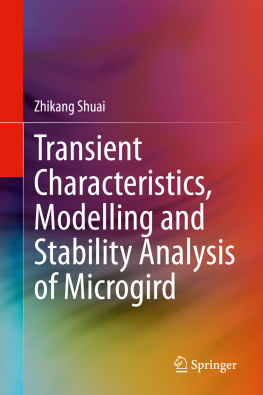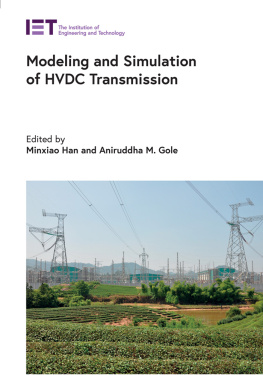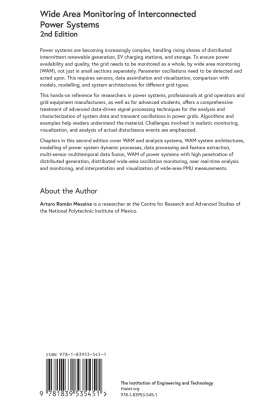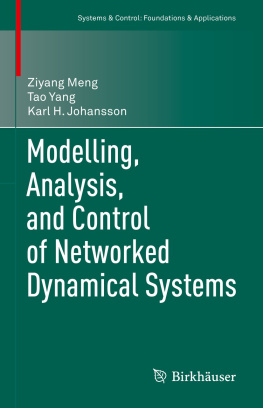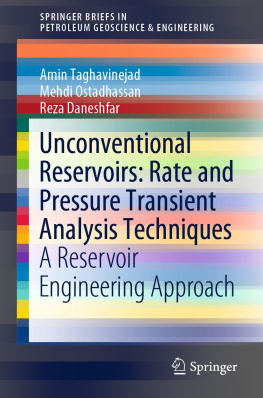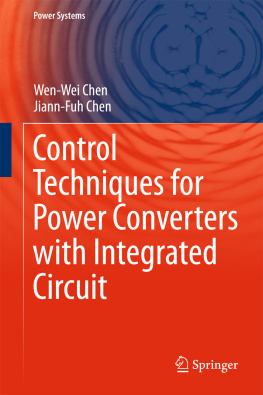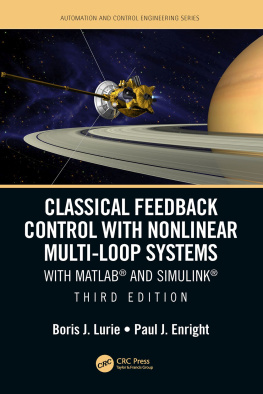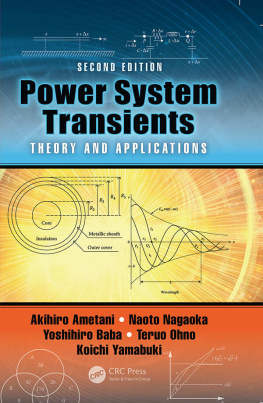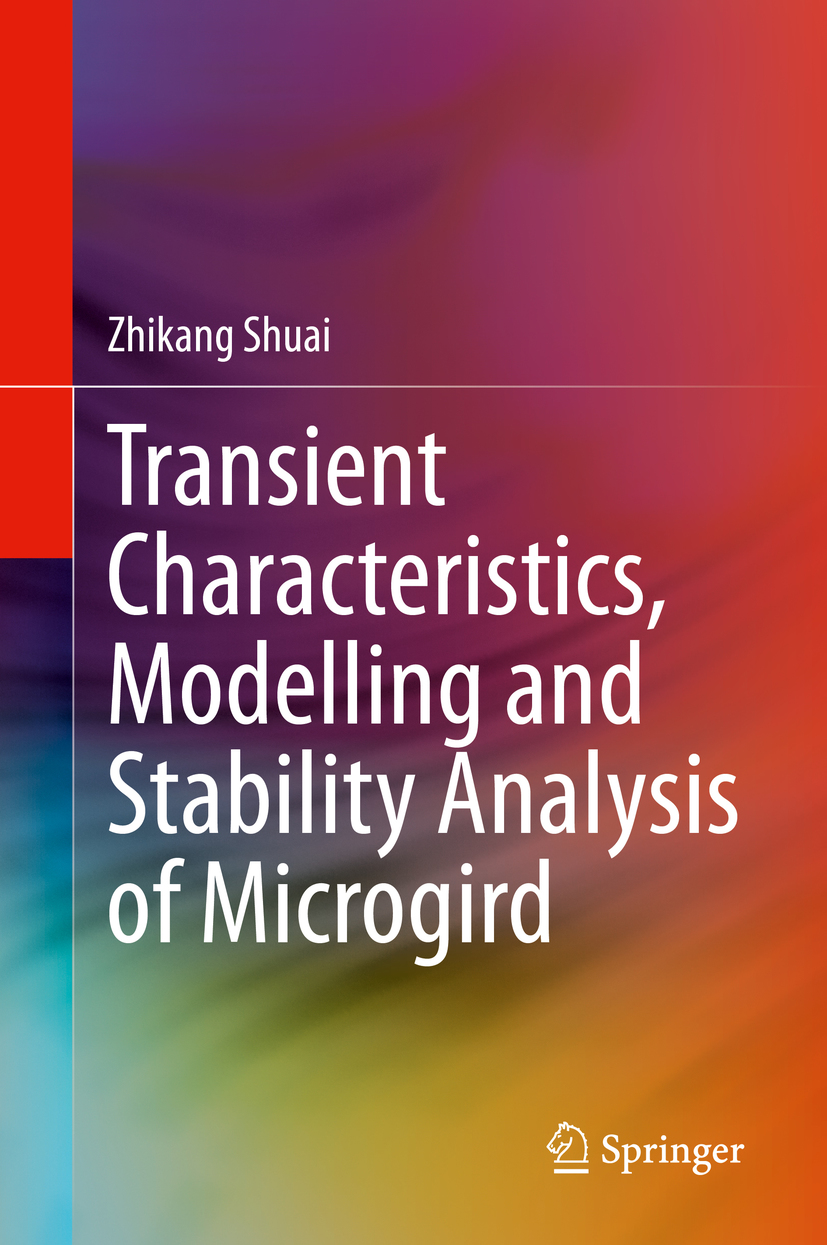Zhikang Shuai
Transient Characteristics, Modelling and Stability Analysis of Microgird
1st ed. 2021
Zhikang Shuai
College of Electrical and Information Engineering, Hunan University, Changsha, Hunan, China
ISBN 978-981-15-8402-2 e-ISBN 978-981-15-8403-9
https://doi.org/10.1007/978-981-15-8403-9
Springer Nature Singapore Pte Ltd. 2021
This work is subject to copyright. All rights are reserved by the Publisher, whether the whole or part of the material is concerned, specifically the rights of translation, reprinting, reuse of illustrations, recitation, broadcasting, reproduction on microfilms or in any other physical way, and transmission or information storage and retrieval, electronic adaptation, computer software, or by similar or dissimilar methodology now known or hereafter developed.
The use of general descriptive names, registered names, trademarks, service marks, etc. in this publication does not imply, even in the absence of a specific statement, that such names are exempt from the relevant protective laws and regulations and therefore free for general use.
The publisher, the authors and the editors are safe to assume that the advice and information in this book are believed to be true and accurate at the date of publication. Neither the publisher nor the authors or the editors give a warranty, expressed or implied, with respect to the material contained herein or for any errors or omissions that may have been made. The publisher remains neutral with regard to jurisdictional claims in published maps and institutional affiliations.
This Springer imprint is published by the registered company Springer Nature Singapore Pte Ltd.
The registered company address is: 152 Beach Road, #21-01/04 Gateway East, Singapore 189721, Singapore
Foreword
Microgrid provides possible solutions to get distributed generators and loads together and becomes controllable units of the traditional power system. Several concerns are raised to promote the application of microgrid. In some specific scenarios, like in remote island, microgrid plays an important role in providing reliable power. However, extreme operating conditions and unpredictable weather conditions are expected in remote island, such as high humidity, lack of sustainable primary resources, risk of a weapon attack, etc. These specific environmental conditions would put forward high reliability and strong anti-disturbance ability of microgrid. In other operating scenarios, there would be several extreme operating conditions as well, such as grounded faults, off-grid switching and so on. These extreme conditions need to be dealt with carefully since stability and safety of the microgrid are challenged in these conditions.
This book investigates the transient characteristics and transient stability of the microgrid. The whole book can be divided into three parts. The first part is about transient characteristics analysis among converters with different control schemes and corresponding fault ride through control strategy is proposed. It is pointed out that voltage-controlled converters are facing large inrush current, which can help the design of control system and protective devices in the microgrid. The second part and the third part both talk about the transient stability problem of the microgrid. In the second part, time-domain simulation method for transient stability analysis is discussed based on a reduced mathematical model. In the third part, transient stability is investigated through a theoretical method, such as Lyapunov function and linear matrix inequality. The key technical issues are discussed and possible solutions are given in the book. These works are helpful and inspiring to understand the problems faced by the transient operation of the microgrid.
The main results of this book are original from the authors who perform the related research activities long-term and sustainably. I have no doubt that this book can provide wide use for researchers, engineers and graduate students who carry on the related topics.
An Luo
Preface
With more and more distributed resources are connected to the power system, the microgrid concept has been proposed to regulate distributed resources and different loads as a controllable unit. This makes microgrid to become a typical local power electronic system with a high proportion of power electronic devices. In the past few years, microgrid technology has developed rapidly in both industrial application (such as high reliable power supply, wide range of frequency oscillation elimination, special power supply, circulation suppression, etc.) and theoretical researches (such as mathematical modelling, topology transformation, control optimization and small-signal stability analysis, etc.). These researches deal with several problems encountered by the promotion of microgrid technology.
Since power electronic devices have limited thermal capacity and weak anti-disturbance ability, microgrid is subjected to serious transient stability and poor reliability problem. In recent years, it is reported that power electronic devices are exposed to burn out and the microgrid is prone to transient instability during the transient period in the existing microgrid test bed. To promote the industrial application of microgrid, it is important to carry out theoretical insights into the transient operation of microgrid, especially under extreme conditions. This is the core topic discussed in the book. There are two main concerns raised by the reliable operation of the microgrid during the transient period: (1) the safety of power electronic devices; (2) the stability of the microgrid under disturbances.
This book intends to bring state-of-the-art researches on the transient operation of microgrid in recent years. The book has collected new research ideas and achievements such as fault characteristics comparison among current-controlled IIDGs and voltage-controlled IIDGs, fault ride through control strategies, mathematical modelling and model reduction method in spatial scale and multi-time scale and transient angle stability analysis of virtual synchronous generators.
The motivation of this book is to give the authors perspectives on this topic and provide basic discussions on several problems encountered by microgrid during transient period. The authors hope that this book would help to attract more attention on this topic and can inspire researches in the near future.
The main research results of this book are original from authors who carried out the related research together for almost 5 years, which is a comprehensive summary for the authors latest research results. This book is likely to be of interest to university researchers, R&D engineers and graduate students in electrical engineering who wish to learn the core principles, methods and applications of microgrid during the transient period.
Zhikang Shuai
Changsha, China
2020
Acknowledgements
This book is supported by the Nature Science Foundation of China (NSFC) under Grant 51622702 and 51977066.
The author would like to thank Prof. Z. John Shen from Illinois Institute of Technology (IIT) for his great support and valuable comments on this book. Special thanks go to the postgraduate students Ms. Xia Shen, Ms. Lili He, Ms. Huijie Cheng, Mr. Feng Zhao, Mr. Yelun Peng and Mr. Chao Shen for their contributions and proofreading. Finally, the author would like to thank the long-term support and encouragement from the family.

